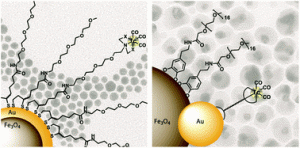
Similarly, by atomic layer deposition, Jaramillo, Prince and co-workers altered the specific binding energies between metal and functional groups and the growth of 2-dimensional (2D) layers on polycrystalline films has been described 32. Here, platinum was electrodeposited on bare gold electrodes in the presence of a strongly binding surfactant. Moffat and coworkers reported an electrochemically induced self-terminating growth on film substrates 30, 31. The overgrowth, however, resulted often in separated nanoparticles that nucleated first at e.g. In literature, various bimetallic nanostructures have been synthesized 27, 28, 29. Additionally, homogeneous shell growth is challenging as nucleation and growth preferentially occur on vertices or edge sites with low coordination numbers and high surface energies 26. As the metal ion diffusion to the surface is often the rate limiting step, galvanic displacement can result in alloy formation or in a porous structure 24, 25. The synthesis, however, demands often the use of organic solvents, multiple synthesis steps, direct electrode contact, high temperatures, or multiple nanometers in shell thickness to obtain a continuous layer 22, 23. A number of strategic routes to obtain these structures are known in literature, such as galvanic displacement 9, 10, 11, 12, laser ablation 13, plasma sputtering 14 controlled reduction 15, 16, 17, 18, exploitation of thermodynamic segregation through annealing 19, 20, anion coordination 21 or through a SiO 2 encapsulated nanoreactor approach 7. The simplicity of the described synthetic route can potentially be adapted to various other material libraries to obtain atomically smooth core-shell systems.Ĭore-shell nanostructures can be used as selective and active catalysts, for biomedical and pharmaceutical applications, and for the creation of photonic crystals and high photoluminescent materials 1, 2, 3, 4, 5, 6, 7, 8. The prerequisites for homogeneous growth are low core-binding ligands with moderate fast ligand exchange in solution, a mild reducing agent to mitigate homonucleation and a strong affinity of a second ligand system that can bind to the shell’s surface. The synthesis is based on the exchange of low binding citrate ligands on gold, the reduction of platinum and the subsequent kinetically hindered growth by carbon monoxide as strong binding ligand. Here, we demonstrate that atomically-thin and homogeneous platinum shells can be grown via a colloidal synthesis method on a variety of gold nanostructures ranging from spherical nanoparticles to nanorods and nanocubes. The synthesis of well-defined core-shell architectures remains, however, highly challenging.

Core-shell particles with thin noble metal shells represent an attractive material class with potential for various applications ranging from catalysis to biomedical and pharmaceutical applications to optical crystals.


 0 kommentar(er)
0 kommentar(er)
